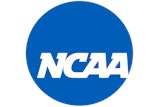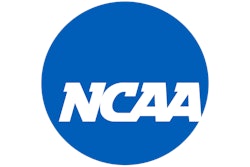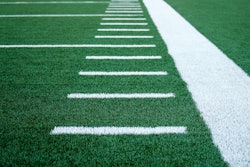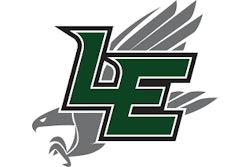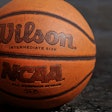State associations make headway in the battle to attract and keep officials.
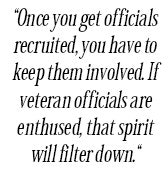
Minnesota high school football players, coaches and fans might notice improved and more efficient officiating this fall. A National Football Officiating Seminar, one of a series of grassroots efforts held around the country to recruit and motivate men and women to wear striped shirts, was held for about 100 people last spring in Minneapolis.
Jerry Seeman, the National Football League's senior director of officiating and a Minnesota native, moderated the seminar, which was intended to help football officials sharpen their skills. "Once you get officials recruited, you have to keep them involved," says Dorothy McIntyre, an associate director at the Minnesota State High School League. "If veteran officials are enthused, that spirit will filter down.
We've got, like most state associations do, officials coming in the front door, and a year or two later, they leave through the back door."
Shortages of officials have plagued high school athletics for years. Even state associations claiming to have more officials now than ever before-thanks largely to successful recruiting efforts-still have trouble finding enough for some sports. "We tell people, 'If you can walk and breathe and you become a soccer official, somebody's going to hire you,' " says Hank Zaborniak Jr., an assistant commissioner at the Ohio High School Athletic Association, who estimates the state uses 1,000 soccer referees but could find work for 2,000. The increase in the number of high school sports, teams and games in recent years has only exacerbated the problem.
About 300,000 officials are certified by the National Federation of State High School Associations (meaning they've passed a written rules test) to work high school competition, says Emry Dilday, a member of the National Federation Officials Association Board of Directors and a football and track official in Missouri.
But turnover is "horrendous," he adds. Departing officials cite several reasons for leaving the ranks, Dilday says, including the time commitment involved, low pay, the absence of proper training, a dearth of high-profile games and a lack of respect by coaches, players, parents and fans. "People leave when their expectations are not what the reality is," Zaborniak says. "Superintendents, principals, athletic directors and state athletic associations expect officials to show up, do a good job and be paid as little as possible. They're needed, but they're not necessarily welcome. But of all the things an athletic director has to deal with, officials are probably the least of his or her problems."
Unless, of course, there are not enough of them. That's why many state associations have developed creative ways to recruit and retain officials-from encouraging registered officials to mentor at least one male and one female whom they believe have the qualities to be a good official (Kansas) to asking high school administrators to recommend two or three senior students whom they think might be interested in earning extra money by officiating while in college (Oklahoma).
In Alaska, where about 900 certified officials work a state that covers nearly 600,000 square miles, high school students are encouraged to explore officiating at the youth level through a program that allows them to become certified for half the cost. This way, a new generation of potential officials can be developed at an early age and-depending on the turns their lives take-might be able to work in lesspopulated areas where officials are most needed. In some parts of rural Alaska, where there may not be any officials, school administrators have the option of using officials not certified by NFHS, if the opposing school agrees, says Gary Matthews, executive director of the Alaska School Activities Association. "Some of these towns aren't accessible by road," he says. "So officials would have to go by boat, plane, dogsled or snowmobile."
The situation isn't as extreme in Minnesota, where about 5,500 officials are registered with the MSHSL, but many smaller communities "hanging on by the edge of their teeth" must hold football games on nontraditional nights (and days) because there aren't enough officials to go around, McIntyre says.
An attractive 6-by-10-inch ad placed in the Minneapolis Star-Tribune last March by the MSHSL trumpeted the benefits of and qualifications needed to become a high school sports official. The league, which received more than 100 calls from the ad, plans to run it again later this year, according to McIntyre.
Wyoming administrators thought they had found an effective recruiting strategy, too, but so far coaches aren't supporting it. The plan called for Ron Erion, associate commissioner of the Wyoming High School Activities Association, to visit practices at member schools with several local high school sports officials in tow. The one-hour-and-45-minute presentation would include officials' testimonials, rules quizzes with T-shirts as prizes and background about what it takes to become an official. Erion held one session at Sheridan High School last year for about 50 girls' and boys' basketball players.
He then sent memos to other coaches at the association's 74 member schools, offering to visit their teams. So far, he's received no invitations. "I would do it again in a minute, but I haven't been able to get coaches to buy into it," he says. "I don't know if they don't want to give up practice time or if they think this isn't their concern, but it should be. Everyone complains about officiating. Here's a way to get new people interested." (On a more successful note, the association also sponsors popular officiating mechanics camps to help improve the self-esteem of new and inexperienced officials.)
While many state associations continue to improve the educational programs they offer, very few have done so to the same extent as Ohio. About 12 years ago, the number of basketball officials there was beginning to drop, Zaborniak says. In a state with about 1,600 varsity basketball teams (not to mention almost 5,000 additional junior varsity and freshman teams), that spelled trouble. Sensing that officials needed more education, OHSAA developed a 30-hour training program for each major sport.
Administered by local officials associations for a fee, the program teaches officiating proficiency (where to stand, how to log fouls, where to look for penalties and when, how to diffuse volatile situations, how to get scheduled for more games, and so on), and includes written tests on rules and mechanics. "We even have a segment on how to pack your bag," Zaborniak says. "You laugh, but somebody has to teach these things."
Ohio's basketball training program has been held since 1990. The result? An increase from 3,600 basketball officials in 1990 to 4,800 this year. In all sports, Ohio boasts about 14,000 officials, up from 11,300 a decade ago. "We made becoming an official more difficult, and we now have more officials than we've ever had," Zaborniak says. Similar programs are offered for football referees, with training for soccer and volleyball officials scheduled to begin next year. By 2004-05, Zaborniak says, officiating training will be offered for most interscholastic sports in Ohio.
Michigan has followed Ohio's lead, and now the National Federation Officials Association is helping develop a national training curriculum for all sports for which NFHS writes rules-hoping to attract more women and minority officials in the process. These programs will be available to all state high school associations for distribution to local officials groups. Volleyball and soccer curricula are currently available, with basketball, softball and baseball on the way this fall.
Programs for football officials will be available next year, Dilday says. "You would think people would find the training requirements too time-consuming," he says. "But more officials are buying into it if you offer good, solid training." But will education and other incentives-like plaques and certificates after several years of service-be enough to further bolster the number of officials in the ranks? Dilday says the battle is an uphill one. "Every time you turn on a professional game, you hear the announcers being critical of the officials, and then they show you 50 different angles of a play to dissect it and determine if the officials made the right call," Dilday says. "I think young people see that and say to themselves, 'Why would anybody want to get into officiating and be put under that kind of pressure?' "
The answer, says Zaborniak, a Big 10 football official, is quite simple. "The reason we work to improve officiating is because these young men and women will have a better experience when they step onto that field or court," he says. "In the end, interscholastic athletics will be a better product for your kid, my kid and everybody else's kid."













